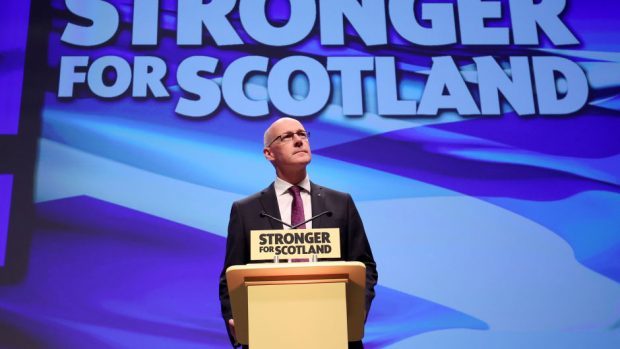Thousands of pupils across the north of Scotland are not receiving a good enough education.
Shock new figures released by the Scottish Government show youngsters across the region are not hitting expected levels in reading, writing, numeracy and listening and talking.
Aberdeen has the worst reading and writing results among primary pupils in the country, while all the local authorities in the north and north-east have recorded below average results.
Teacher recruitment also remains a difficulty across the north of Scotland, with the pupil to teacher ratio getting worse.
The figures come just days after it emerged Scotland has tumbled down international education rankings.
Scottish Labour’s Lewis Macdonald said the figures made a mockery of Nicola Sturgeon’s claim education was her top priority, while Conservative MSP Ross Thomson blamed the Scottish Government for the “chronic shortage” of teachers.
Shetland MSP Tavish Scott said the SNP had questions to answer after the publication of the figures.
On reading, Aberdeen recorded the lowest percentage of students hitting the expected results in primaries one, four and seven in the country.
The Western Isles recorded the worst reading results in third year at secondary school.
In writing, Aberdeen again scored the worst results across all the primary measures and also S3 third level.
At P1 and P4, the Granite City recorded the lowest percentage of students hitting the expected results in listening and talking.
Moray was the worst in Scotland at P7, while Aberdeen recorded the worst results in S3.
For numeracy, the Granite City again recorded the worst figures in the country for P1 and P4.
Other local authorities across the north of Scotland regularly recorded results often significantly below the national average.
In Highland, 73% of P1 students met expectations in reading, falling to 67% P4. A result of 68% was returned in P7.
In writing, just 58% of Highland P4 pupils were meeting expectations – well below the national average of 69%.
Across the country, more than a quarter of children are not achieving the expected levels of literacy and numeracy as they finish primary school, with the figures showing the proportion of pupils achieving the relevant level for their school year decreased throughout the primary stages.
The Achievement of Curriculum for Excellence Levels statistics were published for the first time ever yesterday, meaning no year-on-year comparison is possible.
The figures represent teachers’ views of their pupils’ performance, leading to suggestions they should be treated with caution.
Meanwhile, figures show a continued rise in the pupil/teacher ratio in north schools.
In Aberdeen, there is now one teacher for every 14 students, up from 13.6 in 2015, while Aberdeenshire now has 13.4 per pupil, compared to 13.3 in 2015.
Highland has remained stable on 13.1 teachers per pupil.
Nationally, there are 253 more teachers than there were in 2015 – although there are still 1,052 fewer teachers in Scotland today than there were in 2010.










